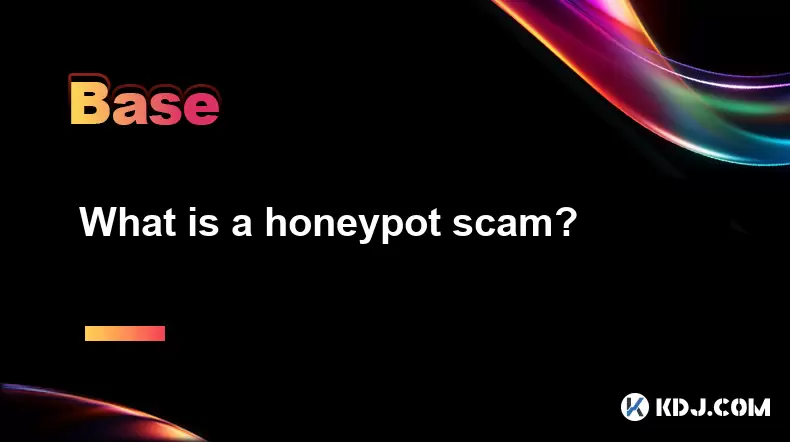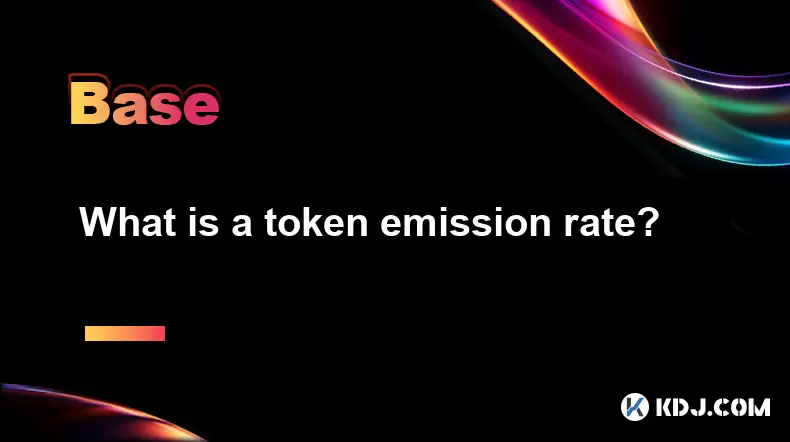-
 Bitcoin
Bitcoin $108,960.1513
0.84% -
 Ethereum
Ethereum $2,578.1548
2.56% -
 Tether USDt
Tether USDt $1.0001
-0.02% -
 XRP
XRP $2.2702
1.71% -
 BNB
BNB $662.6676
1.28% -
 Solana
Solana $152.6556
3.53% -
 USDC
USDC $0.9999
0.00% -
 TRON
TRON $0.2865
0.80% -
 Dogecoin
Dogecoin $0.1726
5.60% -
 Cardano
Cardano $0.5883
2.60% -
 Hyperliquid
Hyperliquid $39.9405
3.10% -
 Sui
Sui $2.9147
1.24% -
 Bitcoin Cash
Bitcoin Cash $493.8494
2.04% -
 Chainlink
Chainlink $13.6129
3.68% -
 UNUS SED LEO
UNUS SED LEO $9.0589
0.46% -
 Avalanche
Avalanche $18.2965
2.82% -
 Stellar
Stellar $0.2493
4.35% -
 Shiba Inu
Shiba Inu $0.0...01178
2.25% -
 Toncoin
Toncoin $2.8078
-6.81% -
 Hedera
Hedera $0.1604
4.96% -
 Litecoin
Litecoin $87.8270
1.20% -
 Monero
Monero $320.4173
1.87% -
 Polkadot
Polkadot $3.4079
1.81% -
 Dai
Dai $1.0000
0.00% -
 Ethena USDe
Ethena USDe $1.0000
-0.01% -
 Bitget Token
Bitget Token $4.4122
0.50% -
 Uniswap
Uniswap $7.3890
1.84% -
 Aave
Aave $286.0205
5.66% -
 Pepe
Pepe $0.0...01012
4.35% -
 Pi
Pi $0.4643
3.14%
What is a honeypot scam?
A honeypot scam traps crypto investors by letting them buy tokens but blocking sales, locking funds and leaving victims with worthless assets.
Jul 07, 2025 at 02:50 am

Understanding the Concept of a Honeypot Scam
A honeypot scam refers to a deceptive strategy used by malicious actors in the cryptocurrency space to lure unsuspecting users into interacting with fraudulent smart contracts or tokens. These scams are designed to appear legitimate, often mimicking popular decentralized finance (DeFi) projects or promising high returns to attract investors. The term "honeypot" is borrowed from cybersecurity, where it originally described traps set to catch hackers.
In the context of blockchain and crypto, a honeypot typically involves a token contract that prevents holders from selling their assets after purchase. This means that while users can buy into the token easily, they cannot exit their position, effectively locking their funds within the contract. The scammers behind these schemes benefit by draining liquidity pools or manipulating the token's price before disappearing with the stolen assets.
The core mechanism of a honeypot scam revolves around restricting sell functionality through malicious code embedded in the token contract.
How Honeypot Scams Are Deployed
Scammers deploy honeypot scams through a series of calculated steps aimed at maximizing trust and minimizing suspicion. They often start by creating a new token on platforms like Binance Smart Chain or Ethereum, giving it an appealing name and logo similar to established projects. They may also develop fake websites, social media accounts, and even whitepapers to bolster credibility.
Once the infrastructure is ready, they add liquidity to decentralized exchanges such as PancakeSwap or Uniswap. To encourage early investment, they might offer large rewards or promote the token aggressively on social media channels like Telegram, Twitter, and Reddit.
After attracting buyers, the scammer triggers the honeypot by activating the malicious code in the contract. At this point:
- Buyers find themselves unable to sell their tokens despite being able to purchase them freely.
- The scammers remove liquidity from the pool, rendering the token worthless and leaving victims with unusable assets.
- The scammer disappears with the stolen funds, often transferring them across multiple wallets to obscure the trail.
Technical Indicators of a Honeypot Token
Detecting a honeypot scam requires technical knowledge and caution when reviewing a token’s smart contract. Some red flags include:
- Restrictions on selling: If the contract includes functions that prevent transfers or sales under certain conditions, it could be a honeypot.
- Owner-controlled functions: Contracts that allow the owner to pause trading or modify transfer logic pose significant risks.
- Unusual tax mechanisms: High or dynamic transaction taxes that redirect funds to unknown wallets may indicate foul play.
Tools like HoneyBot, RugDoc, or manual audits using BscScan or Etherscan can help identify suspicious code patterns. Users should always verify the contract source code and look for third-party audits before investing.
Real-World Examples of Honeypot Scams
Several honeypot scams have made headlines due to the massive losses incurred by retail investors. One common pattern involves tokens that promise high yields or mimic well-known DeFi projects. For example, a token named “SafeMoon Clone” might appear on PancakeSwap with similar features but a hidden restriction preventing sells.
Another case involved a token promoted heavily in Telegram groups, offering staking rewards. After reaching a certain market cap, users found they couldn’t sell their holdings. Shortly thereafter, the developers removed liquidity, causing the token value to crash to zero.
These examples highlight how scammers exploit human psychology and the lack of regulation in decentralized environments. Victims often lose their investments without recourse due to the pseudonymous nature of blockchain transactions.
Protecting Yourself from Honeypot Scams
Avoiding honeypot scams involves a combination of vigilance, education, and technical verification. Here are actionable steps to protect yourself:
- Check the contract code: Always review the smart contract on BscScan or Etherscan for known honeypot patterns.
- Use honeypot detection tools: Platforms like HoneyBot or RugDoc can scan tokens and flag potential risks.
- Verify liquidity lock status: Ensure that the project has locked its liquidity in a transparent manner through services like Liquidity Locker.
- Be wary of anonymous teams: Projects with no verifiable team or unclear roadmap are more likely to be scams.
- Never invest based solely on hype: Promises of guaranteed returns or aggressive promotion on social media should raise red flags.
By following these precautions, investors can significantly reduce their exposure to honeypot scams.
Frequently Asked Questions
Q: Can honeypot scams be reversed or recovered?
A: Once funds are trapped in a honeypot contract or the liquidity is removed, recovery is nearly impossible. Blockchain transactions are irreversible, and scammers usually move the funds quickly across multiple wallets.
Q: How do I check if a token is a honeypot?
A: You can use tools like HoneyBot or manually inspect the contract code on BscScan or Etherscan. Look for functions that restrict selling, allow owner intervention, or implement unusual transfer logic.
Q: Are all new tokens on DEXs honeypots?
A: No, not all new tokens are honeypots. However, many scams originate from unvetted tokens on decentralized exchanges. It’s essential to perform due diligence before investing.
Q: Why do people fall for honeypot scams?
A: Honeypot scams prey on greed and FOMO (fear of missing out). Scammers create urgency and excitement around a token, making it difficult for inexperienced investors to assess the risk objectively.
Disclaimer:info@kdj.com
The information provided is not trading advice. kdj.com does not assume any responsibility for any investments made based on the information provided in this article. Cryptocurrencies are highly volatile and it is highly recommended that you invest with caution after thorough research!
If you believe that the content used on this website infringes your copyright, please contact us immediately (info@kdj.com) and we will delete it promptly.
- Babylon, Bitcoin, and the EVM Mainnet: A New Era for BTCFi?
- 2025-07-07 16:30:11
- Queen Elizabeth Coin Sells for £31,000: A Royal Fortune in Your Pocket?
- 2025-07-07 16:30:11
- Altcoin Season on the Horizon? Michael van de Poppe Eyes a Potential 76% Surge
- 2025-07-07 16:35:12
- Pi Network Price Prediction: Is $1,000 Realistic?
- 2025-07-07 14:30:13
- Cryptocurrency Fraud: Secret Service Issues Warning Amidst Rising Scams
- 2025-07-07 14:30:13
- XRP Price & Bitcoin to $3.4M by 2030? A NYC Perspective
- 2025-07-07 14:50:12
Related knowledge

What is a user-generated content (UGC) NFT platform?
Jul 04,2025 at 01:49pm
Understanding the Concept of a UGC NFT PlatformA user-generated content (UGC) NFT platform is a digital marketplace or ecosystem where users can create, mint, and trade non-fungible tokens (NFTs) that represent ownership of original digital content they produce. Unlike traditional NFT platforms where creators often include professional artists or develo...

What is composability in DeFi?
Jul 06,2025 at 04:07pm
Understanding the Concept of Composability in DeFiComposability in DeFi refers to the ability of decentralized finance protocols and smart contracts to interact seamlessly with one another, much like building blocks that can be combined in various ways to create new financial products and services. This concept is a core innovation within the DeFi ecosy...

What is a "crypto primitive"?
Jul 05,2025 at 10:14pm
Defining the Concept of a Crypto PrimitiveIn the context of blockchain and cryptocurrency, a crypto primitive refers to a fundamental building block or foundational element used in constructing decentralized systems and cryptographic protocols. These primitives are essential for enabling secure transactions, consensus mechanisms, and smart contract exec...

What is a fair launch?
Jul 05,2025 at 07:31pm
Understanding the Concept of a Fair LaunchA fair launch refers to the release of a cryptocurrency or blockchain project in a manner that ensures equal opportunity for all participants. Unlike traditional token launches, which may involve private sales, venture capital funding, or pre-mining, a fair launch emphasizes transparency and decentralization. In...

What is a token emission rate?
Jul 07,2025 at 02:51am
Understanding the Basics of Token Emission RateIn the realm of cryptocurrencies, token emission rate refers to the speed or frequency at which new tokens are generated and released into circulation within a blockchain network. This concept is fundamental in understanding how certain blockchain ecosystems manage inflation, incentivize participants, and m...

What is a cliff in tokenomics?
Jul 05,2025 at 07:18pm
Understanding the Concept of a Cliff in TokenomicsIn the world of cryptocurrency and blockchain, tokenomics plays a pivotal role in shaping the economic behavior of a digital asset. One of the key mechanisms used to manage token distribution is known as a cliff. This concept is commonly applied in projects that include vesting schedules for tokens, espe...

What is a user-generated content (UGC) NFT platform?
Jul 04,2025 at 01:49pm
Understanding the Concept of a UGC NFT PlatformA user-generated content (UGC) NFT platform is a digital marketplace or ecosystem where users can create, mint, and trade non-fungible tokens (NFTs) that represent ownership of original digital content they produce. Unlike traditional NFT platforms where creators often include professional artists or develo...

What is composability in DeFi?
Jul 06,2025 at 04:07pm
Understanding the Concept of Composability in DeFiComposability in DeFi refers to the ability of decentralized finance protocols and smart contracts to interact seamlessly with one another, much like building blocks that can be combined in various ways to create new financial products and services. This concept is a core innovation within the DeFi ecosy...

What is a "crypto primitive"?
Jul 05,2025 at 10:14pm
Defining the Concept of a Crypto PrimitiveIn the context of blockchain and cryptocurrency, a crypto primitive refers to a fundamental building block or foundational element used in constructing decentralized systems and cryptographic protocols. These primitives are essential for enabling secure transactions, consensus mechanisms, and smart contract exec...

What is a fair launch?
Jul 05,2025 at 07:31pm
Understanding the Concept of a Fair LaunchA fair launch refers to the release of a cryptocurrency or blockchain project in a manner that ensures equal opportunity for all participants. Unlike traditional token launches, which may involve private sales, venture capital funding, or pre-mining, a fair launch emphasizes transparency and decentralization. In...

What is a token emission rate?
Jul 07,2025 at 02:51am
Understanding the Basics of Token Emission RateIn the realm of cryptocurrencies, token emission rate refers to the speed or frequency at which new tokens are generated and released into circulation within a blockchain network. This concept is fundamental in understanding how certain blockchain ecosystems manage inflation, incentivize participants, and m...

What is a cliff in tokenomics?
Jul 05,2025 at 07:18pm
Understanding the Concept of a Cliff in TokenomicsIn the world of cryptocurrency and blockchain, tokenomics plays a pivotal role in shaping the economic behavior of a digital asset. One of the key mechanisms used to manage token distribution is known as a cliff. This concept is commonly applied in projects that include vesting schedules for tokens, espe...
See all articles

























































































